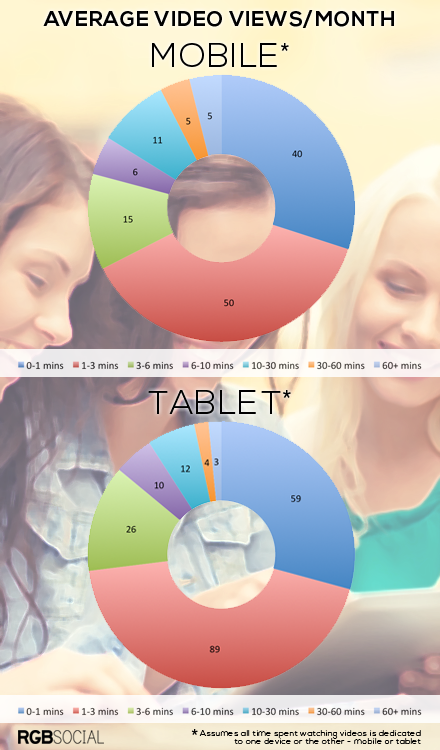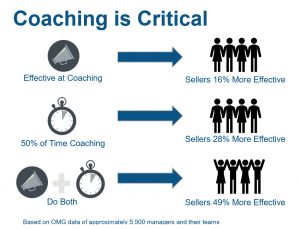By Matthew Peneycad, Published November 13, 2014

Consumer behaviour and consumption habits of video content across devices and platforms is constantly shifting, so keeping a finger on the pulse of those shifts allows us to better plan our own video content, and anticipate results.
It’s not likely that I need to sell you on the importance of video as a consideration for your social media and online marketing efforts, but I’ll quickly set the stage:
Online video represents roughly 78 percent of all Internet traffic (Source: Reuters), and unsurprisingly, mobile video viewing is continuing to explode.
In a recent interview, YouTube CEO, Susan Wojcicki shared, “…that about 50 percent of views are coming from a mobile phone or tablet.” (Source: Recode)
For context, that’s up from about 40 percent reported just last year.
I’ve long hypothesized that like many mobile activities, mobile video viewing is likely done in bite-sized increments; videos with a relatively short duration.
In fact, it has been a recommendation that I’ve generally made to clients to keep their videos concise in order to provide an optimal viewing experience for those on mobile devices.
Also, through my experience, I have observed relatively high drop-off rates for videos that exceed just a few minutes in length. This could have been a result of content being deemed unimportant or uninteresting – sure – but I also have assumed that some of the drop-off is likely caused by longer playtime. After all, the longer a video is, the greater investment you are asking your audience to make in the consumption of that content.
This is why I was surprised to come across OOYALA’s Q4 Global Video Index that revealed 75 percent of time spent watching video on mobile phones was of content 10 minutes in length or longer. On tablets, 60 percent of time spent watching video was of content 10 minutes or longer. 10-plus minutes is a huge investment!
Based on this data, it’s easy to think that you should be creating only lengthy videos from here on out, but share of time is only part of the story.
What does this mean in terms of total number of videos watched by duration?
To make these calculations, I’ve made an assumption that people are watching all mobile video content on one device – mobile phones or tablets, which I acknowledge is unrealistic – and that the average person spends 33 minutes per day watching video on mobile devices (Source: eMarketer), or 16.5 hours per month.
In spite of the unrealistic assumption about device use that I’ve applied to these calculations (obviously people consume content across multiple devices), the following charts will give some rough perspective to the average number of videos people are watching on mobile devices each month by duration:
Now that we’ve collected some intel, what does all of this mean?
PEOPLE INVEST SERIOUS TIME IN CONSUMING LONG-FORMAT VIDEOS ON MOBILE DEVICES
If long-format video is deemed the best way to provide value to your audience, respect this commitment of time, and do your best to maximize the value proposition people experience through the consumption of your content.
Also, when developing key performance indicators (KPIs) for your video content, it should be expected to achieve a significantly smaller number of total views than shorter-format content, because remember, you’ll be competing more fiercely for your audiences’ time and attention. The added time commitment of long-format videos is great if your primary objectives are tied to brand-building, relatively complicated education, or if your business isn’t dependent on a volume-based play, which is the case for many B2B organizations.
PEOPLE MORE FREQUENTLY COMMIT TO WATCHING SHORT-FORMAT VIDEOS ON MOBILE DEVICES
As might be anticipated, the frequency with which people will commit to watching shorter-format video content on their mobile devices far exceeds longer-format content. It looks like videos under about 3 minutes in length is the sweet spot for shorter-format content.
If your KPIs are in any way tied to awareness, impressions, views, clicks, or any other common quantitative, volume-based metrics, it is likely to serve you well to consider telling your story in shorter-format videos.
OPTIMAL VIDEO DURATION SHOULD BE BASED ON OBJECTIVES VERSUS BEST PRACTICES
Base decisions on the optimal length for your video content on a case-by-case basis, and by will work best for your business based on your own objectives, and what proves to be successful with your audience.
Don’t ever base decisions on best practices, or what others are doing. Sure, this kind of information can serve as a great starting point, or foundation on which to build your own thinking, but there are numerous cases of businesses successfully operating by the beat of their own drum, in fact many of the most successful businesses do, and there’s no reason why yours shouldn’t do the same.
_
Do you have any social media or online video content success stories to share?
How do you determine the optimal length for your social media or online video content?
Have an answer to a question, great video content experience to share, or something else to contribute? If so, it would be great to chat with you in the comments, or on Twitter @RGBSocial
Business Articles | Business 2 Community
(478)
Report Post






